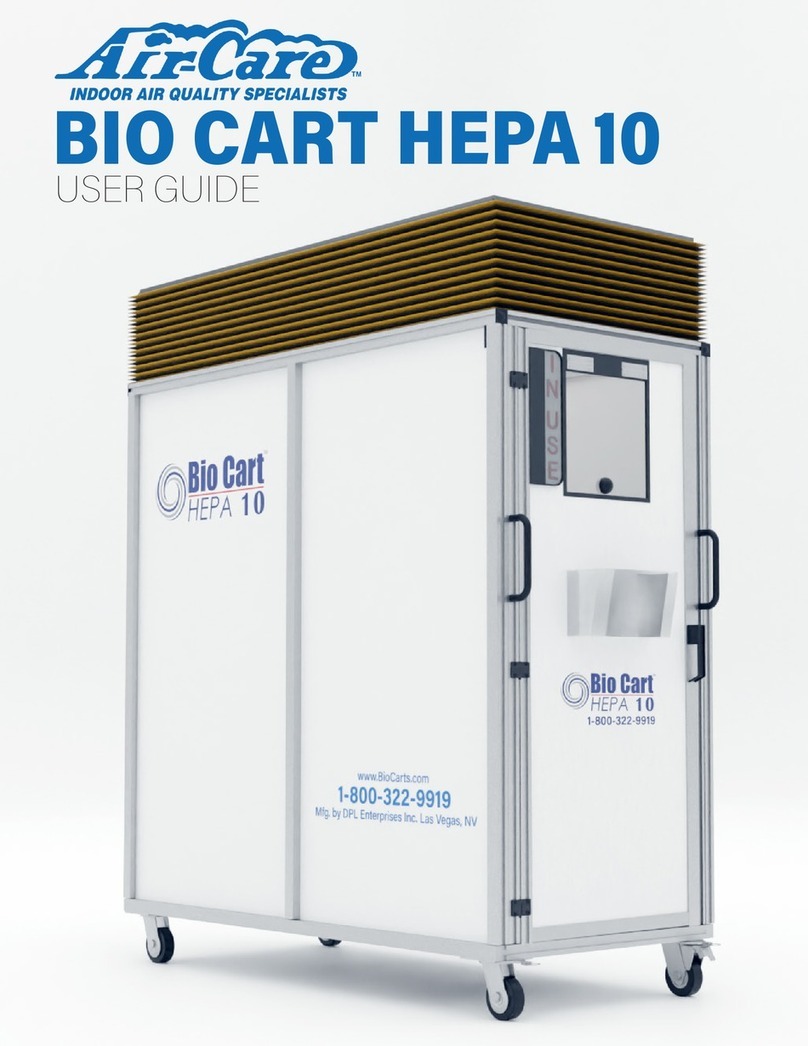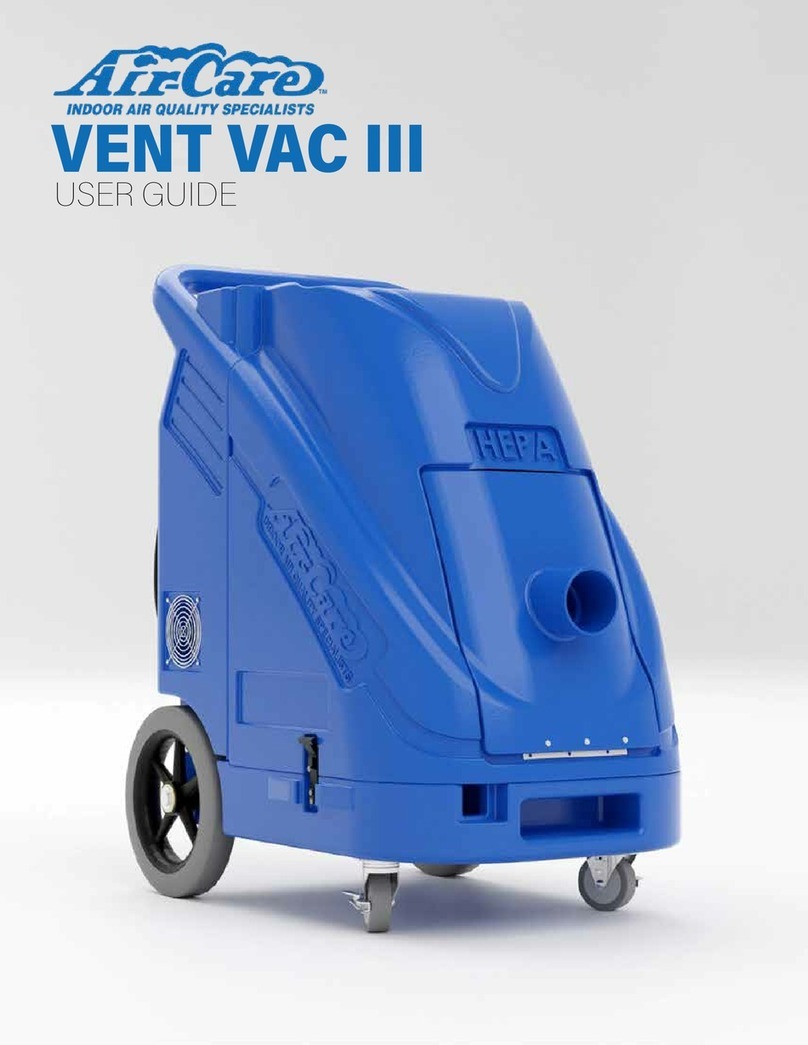
Page 5 of 23
Operating Instructions
Set-Up and Testing
The Air-Care DuctMaster has significantly MORE static pressure than Air-Care TurboJet Negative Air
Machines and will be able to pull heavy, moist (But NOT WET) or sandy construction debris out of
dryer vents, commercial ducts, chimneys, and restoration areas. It is NOT meant to be a wet vacuum
for liquids.
To test an Air-Care DuctMaster, plug one of the power cords into a suitable 120-volt outlet. Line #1
will supply power to VAC1 and VAC2 and the Brush Motor, while Line #2 will provide power to VAC3
and VAC4 and the auxiliary AC socket on the panel. If all 4 VAC Motors are to be used at one time,
Line 1 and Line 2 must be plugged into 2 independent power outlets rated at 15 Amps each or more.
If you are not sure if 2 outlets are independent, press the center “test” button; the green power light
will only light up if the 2 power cords are in independent power outlets. In some areas there may be
independent lines, but the green light may not light up – This is true in some specific areas.
The optional 220/240 Volt Air-Care DuctMaster also requires 2 independent electrical outlets; each
must be 7.5 to 10 amps. This version does not come with a “test” button or green power light.
WARNING: DO NOT TURN ON MORE THAN 2 VAC MOTORS BEFORE PERFORMING THE
‘TEST’, WHICH WILL INDICATE A GREEN LIGHT IF PLUGGED INTO TWO INDEPENDENT
OUTLETS. IF THE EQUIPMENT IS NOT PLUGGED INTO INDEPENDENT OUTLETS BEFORE
TURNING ON MORE THAN 2 VAC MOTORS, A POWER SURGE MAY OCCUR AND TRIP A
CIRCUIT BREAKER IN THE BUILDING.
Because of a unique full flow check valve system, any combination of motors can be used. Any one
motor can be used by itself or any 2 or 3 can be used with identical airflow and static pressure (water
lift). The Universal Remote and the Power Brush operate from Power Cord #1, so even if you are only
using Vac Motor #3 or #4 that use Power Cord #2, both power cords must be plugged in for the brush
to operate.
One motor will provide more airflow than most single motor shop or HEPA vacuums, and two motors
will usually be more than adequate for most vacuuming needs. In those cases where extra power is
required, simply plug in the 2nd power cord and turn on the 3rd or 4th motor as required.
The Air-Care DuctMaster combines 4-high Powered Vacuum Motors, with a vacuum collector hose
and motor-brush assembly to both agitate and collect debris at the same time. This is called Contact
Cleaning. Once completely set up, with the vacuum motors running, the Brush motor speed can be
Selected with a switch on the Control Panel then the brush end can then be inserted into each duct
and the brush motor started with the hand held wireless Remote control or the Brush Run Switch on
the panel for thorough cleaning of the Air Ducts.
UNIVERSAL Remote:
The Handheld Remote Controls the Brush Motor.
The Red Button at the TOP Turns the Brush Motor ON with the First Press, while pressing it again
turns the Brush Motor OFF.
The 2 Buttons just below the RED button are Marked FWD / REV, and either one will Change the
direction of the Brush Rotation when pressed while the Motor is Running.
The other buttons are reserved for any new features that may be added in the future.






























